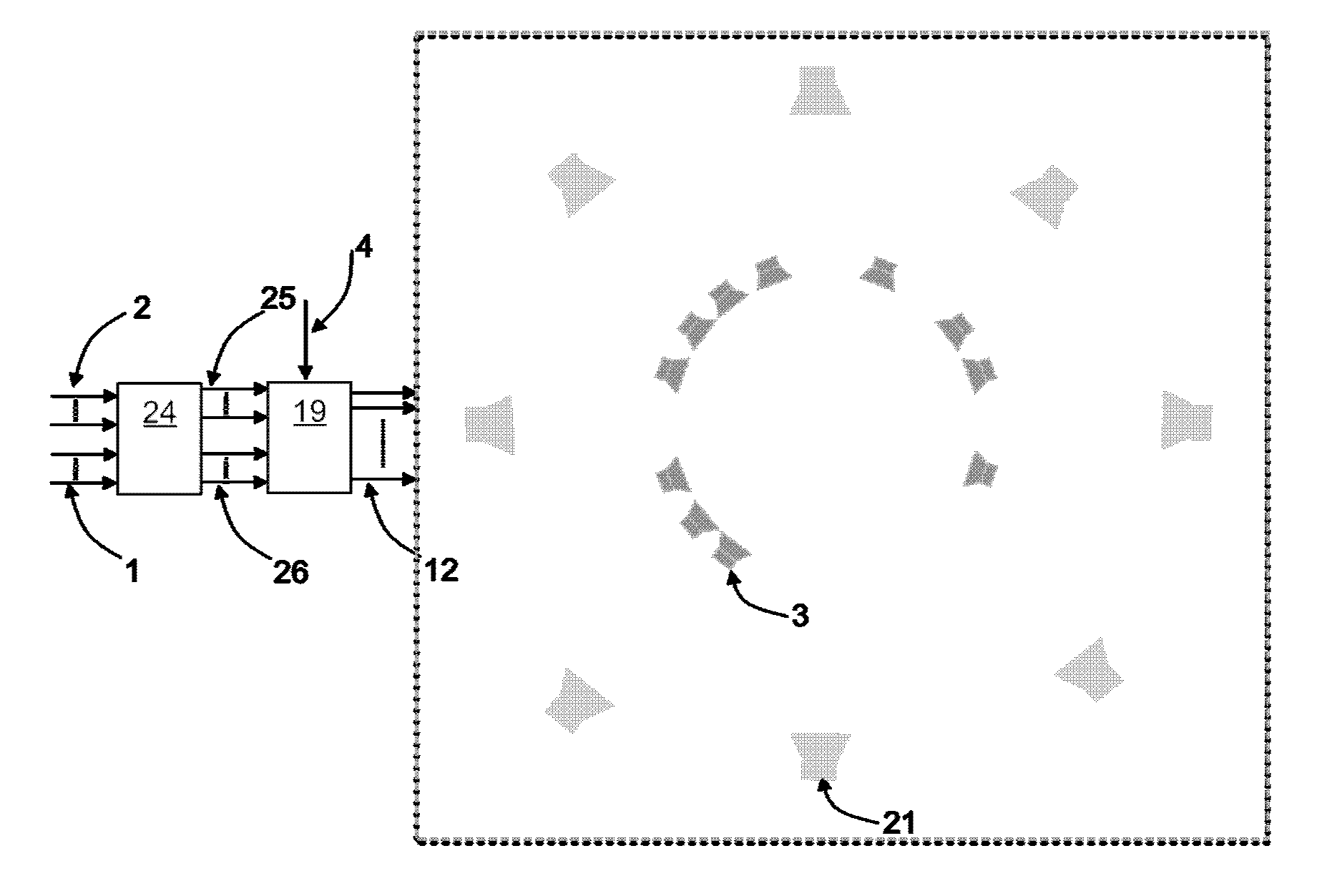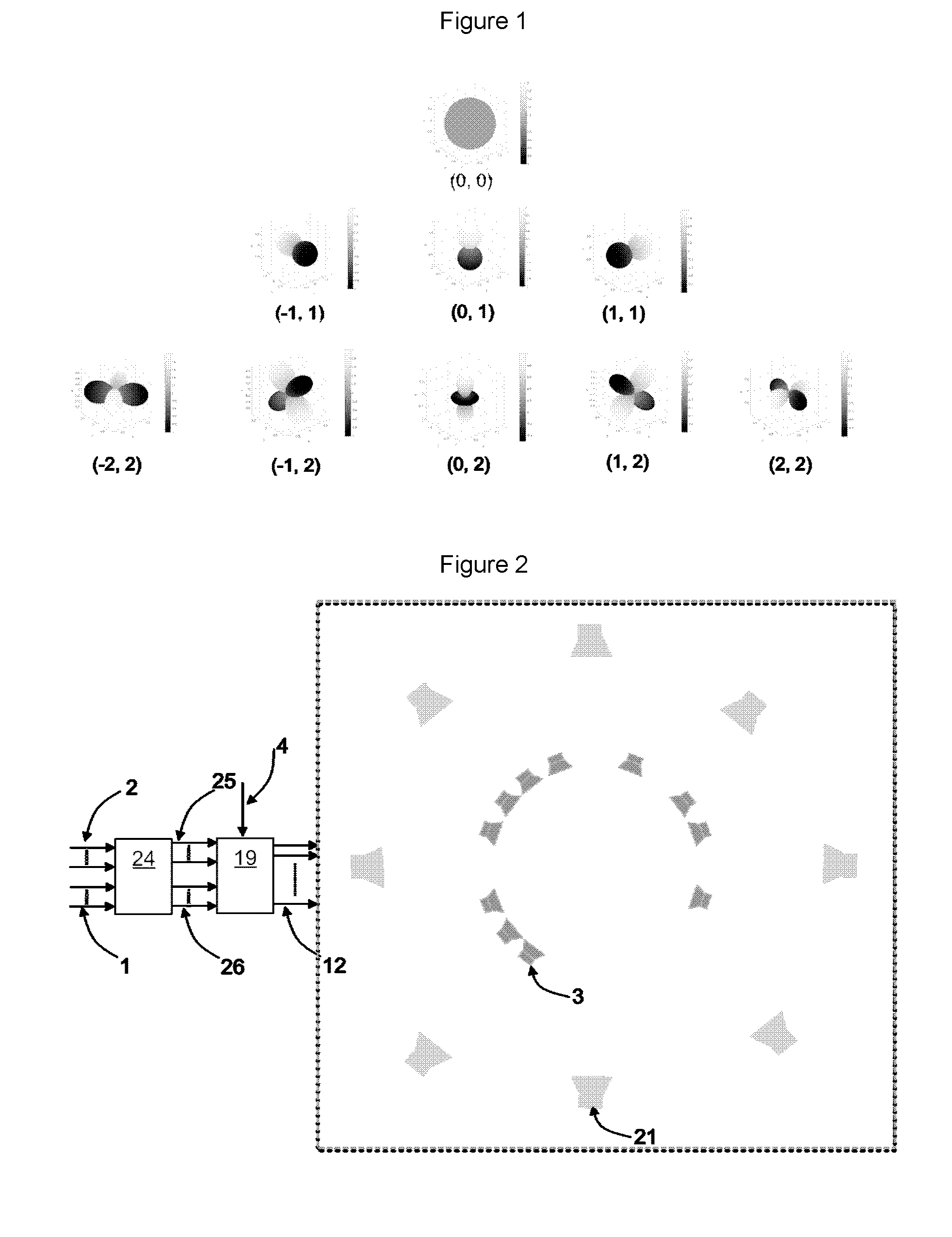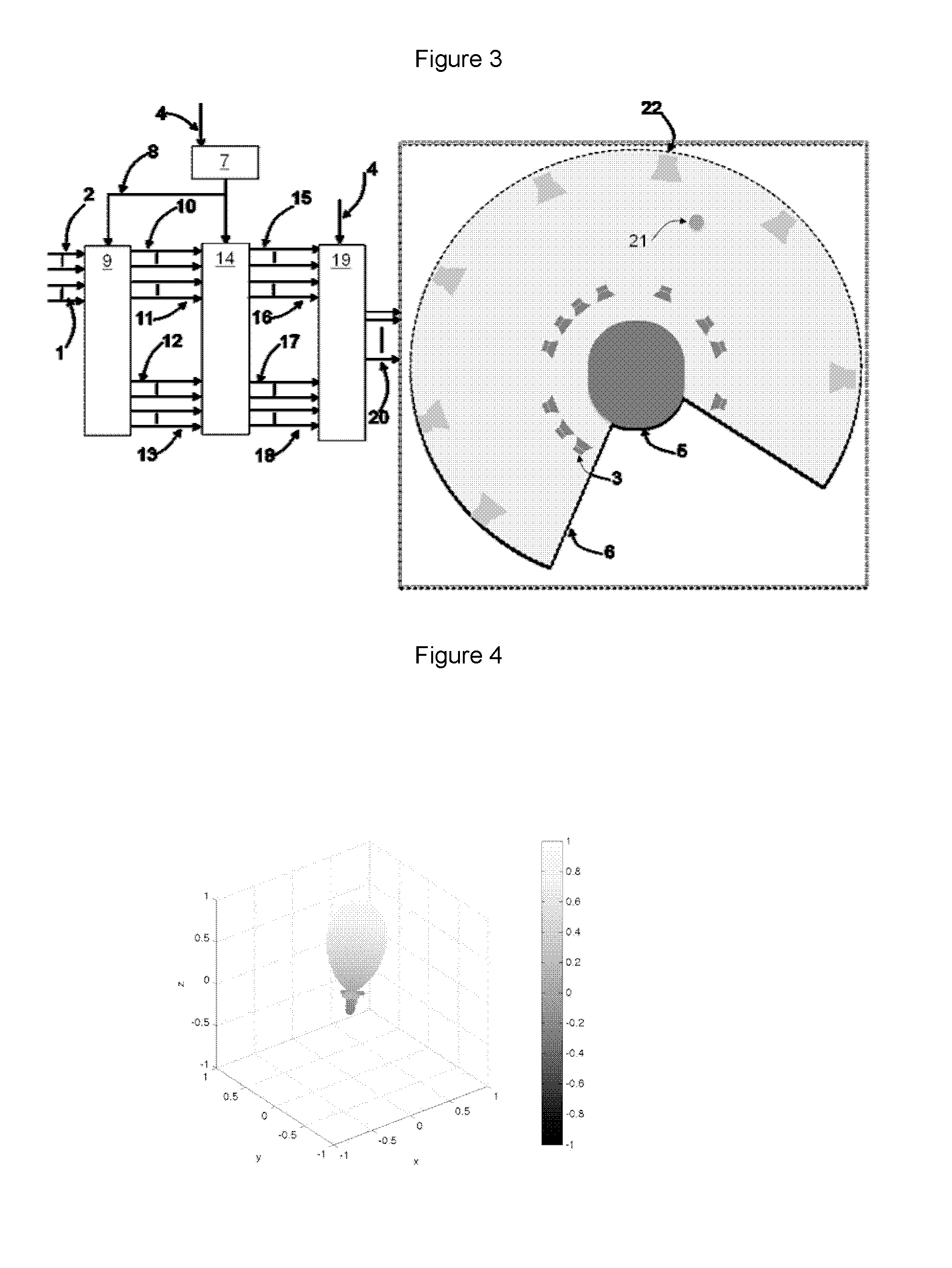Method and device for enhanced sound field reproduction of spatially encoded audio input signals
a spatially encoded audio and audio input technology, applied in the direction of stereophonic arrangments, stereophonic circuit arrangements, electrical devices, etc., can solve the problems of reducing the acceptance factor of such a format, limiting the intellectual property protection of sound engineers, and unsuitable for low bandwidth applications
- Summary
- Abstract
- Description
- Claims
- Application Information
AI Technical Summary
Benefits of technology
Problems solved by technology
Method used
Image
Examples
first embodiment
[0084]In the invention, a linear array of physical loudspeakers 3 is used for the reproduction of a 5.1 input signal. This embodiment is shown in FIG. 5. The target listening area 5 is relatively large and it is used for computing the reproducible subspace together with loudspeaker positioning data considering the loudspeaker array as a window as disclosed by Corteel E. in “Equalization in extended area using multichannel inversion and wave field synthesis” Journal of the Audio Engineering Society, 54(12), December 2006. The second audio input signals 10 are thus composed of the frontal channels of the 5.1 input (L / R / C). The third audio input channels 12 are formed by the rear components of the 5.1 input (Ls and Rs channels). The spatial analysis is achieved in the cylindrical harmonic domain by encoding the second audio input channels into HOA with, for example, N=4. The spatial analysis enables to extract virtual sources 21 which are then reproduced using WFS on the physical louds...
second embodiment
[0085]In the invention, a circular horizontal array of physical loudspeakers 3 is used for the reproduction of a 10.2 input signal. This embodiment is shown in FIG. 6. 10.2 is a channel-based reproduction format which comprises 10 broadband loudspeaker channels among which 8 channels are located in the horizontal plane and 2 are located at 45 degrees elevation and + / −45 degrees azimuth as disclosed by Martin G. in “Introduction to Surround sound recording” available at http: / / www.tonmeister.ca / main / textbook / . The second audio input signals 10 are thus composed of the horizontal channels of the 10.2 input. The third audio input channels 12 are formed by the elevated components of the 10.2 input. The spatial analysis is achieved on the cylindrical harmonic domain by encoding the second audio input channels into HOA with, for example, N=4. The spatial analysis enables to extract virtual sources 21 which are then reproduced using WFS on the physical loudspeakers at their intended locati...
third embodiment
[0086]In the invention, an upper half-spherical array of physical loudspeakers 3 is used for the reproduction of a HOA encoded signal up to order 3. This embodiment is shown in FIG. 7. The extraction of the second audio input signals 10 and the third audio input signals 12 is realized by applying a decoding and reencoding scheme. This consists in decoding the first audio input signals 1 onto a virtual loudspeaker setup that performs a regular sampling of the full sphere with L=(N+1)2 loudspeakers considered as plane waves. Such sampling techniques are disclosed by Zotter F. in “Analysis and Synthesis of Sound-Radiation with Spherical Arrays” PhD thesis, Institute of Electronic Music and Acoustics, University of Music and Performing Arts, 2009.
[0087]The second audio input channels 10 are thus simply extracted by selecting the virtual loudspeakers located in the upper half space. The sound field description data 11 associated to the second audio input channels are thus simply correspo...
PUM
 Login to View More
Login to View More Abstract
Description
Claims
Application Information
 Login to View More
Login to View More - R&D
- Intellectual Property
- Life Sciences
- Materials
- Tech Scout
- Unparalleled Data Quality
- Higher Quality Content
- 60% Fewer Hallucinations
Browse by: Latest US Patents, China's latest patents, Technical Efficacy Thesaurus, Application Domain, Technology Topic, Popular Technical Reports.
© 2025 PatSnap. All rights reserved.Legal|Privacy policy|Modern Slavery Act Transparency Statement|Sitemap|About US| Contact US: help@patsnap.com



